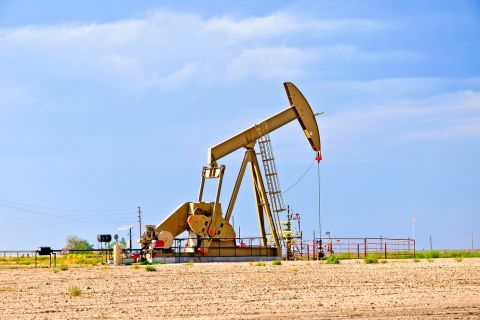Let us come now to praise famous men—those who will build more pipelines, central processing plants and water disposal facilities in the Permian Basin.
The media has been awash in data about the push and pull of big, bigger, biggest oil production and even bigger logistics challenges. A takeaway lag is looming because pipes are already full, yet experts think Permian oil and gas production is set to double in the next five years.
Wall Street analysts are worried about increasing water disposal problems, saying water will become the next constraint after pipelines. Some are warning that drilling and completions could be postponed or deferred, causing a temporary slowdown in the pace of production growth—not to mention cash flow. The equities of some significant Permian players that hold fantastic amounts of reserves have suffered, despite oil prices having risen above $65 per barrel (bbl).
In June, WoodMackenzie issued a study that theorized so much water is going to be produced that it will cause dislocations in the ability to handle it—so much so that the research firm actually reduced its 2025 production growth estimate by 400,000 bbl/d.
Another research firm, IHS Markit, said it thinks Permian crude oil output will rise from 2.5 MMbbl/d now to 5.4 MMbbl/d by 2023, an increase of more than 100%. The rise in output since a few short years ago is nothing short of “stunning,” it said.
These production targets will entail drilling more than 41,000 new wells, assuming $60 oil, IHS said. What’s more, after assuming infrastructure constraints force operators to defer a lot of drilling until the latter half of 2019, production will still rise.
IHS also thinks natural gas production coming out of the prolific basin will double, reaching 15 billion cubic feet a day (Bcf/d) by then.
Bernstein analyst Jean Ann Salisbury weighed in, saying she expects Permian gas production to triple by 2025. We will need to build six new pipelines, each with capacity of 2 Bcf/d, by that date, she said.
During the period to 2023, IHS assumed a 2.5 MMbb/d expansion of oil pipeline capacity will take place, as well as an 8 Bcf/d expansion of natural gas pipeline capacity, and additional gas processing capacity of 7 Bcf/d to handle liquids-rich gas production. IHS assumes expenditures of $308 billion. That’s a huge number by anyone’s calculation. (By way of comparison, the GDP of Hong Kong was $309 billion in second-quarter 2017, according to World Bank data.)
For more perspective, we chatted recently with Trip Rodgers, who is watching all this unfold. He is a portfolio manager at BP Capital Fund Advisors, the Dallas company founded by T. Boone Pickens. Under this umbrella, the firm invests for the Boone family office, two mutual funds (upstream and midstream MLP) and a new ETF launched in March (stock symbol BOON). The latter combines equities of E&Ps, service companies and big energy end users such as industrials and materials. (Last year, Boone closed down his hedge fund.)
“Short-term concerns are masking long-term opportunities,” Rodgers told me. “Pipeline limitations in the Permian are a hot topic, but we’re taking the longer-term view. The Permian will be an oil growth driver for many years to come even if you have takeaway constraints. If you model cash flows for many of the companies, the value is not in the next few years—so much of the value is their reserves in the ground, hence it is a long-term equities play. Yes, a lot of completions will be delayed, but we think at the worst, they will be deferred.”
As of March 31, the funds held several big Permian names: ProPetro, Enterprise Products Partners, Magellan Midstream, RSP Permian, Parsley Energy, WPX Energy and Pioneer Natural Resources, among others.
“We think there is slight or limited downside on the pace of growth in earnings [for E&Ps and service companies].”
He said the point was to look at the number of pipeline additions projected to be built; the problem will be resolved.
ExxonMobil just announced it will team up with Plains All American to build one of the largest lines yet proposed, with capacity of 1 MMbb/d, for moving oil and condensate.
Stratas Advisors, a Hart Energy company, said in its recent report, “With Midland WTI crude pricing at double-digit $/bbl discounts to Cushing, Okla., WTI prices, and with Cushing WTI prices pricing at double-digit discounts to Brent dated light crude, it is no wonder to us that the Permian area is very active in midstream infrastructure development. We are updating our database with no fewer than 12 project updates related to pipelines serving the Permian.”
Please join us once again for our highly popular A&D Strategies & Opportunities conference and workshop in Dallas on Sept. 5 and 6. It is always helpful to hear insights from buyers and sellers as to where the market is going next.
Recommended Reading
D-J’s Elevation Midstream, ARB Midstream Subsidiary to Merge
2024-07-08 - Elevation Midstream and Platte River Holdings, a subsidiary of ARB Midstream, are merging to create a D-J Basin midstream company of scale.
Martin Resource Offers to Buy Spinoff Martin Midstream for $100.3MM
2024-05-27 - Martin Resource Management created Martin Midstream through an IPO in 2002.
Evolution Petroleum Sees Production Uplift from SCOOP/STACK Deals
2024-05-07 - Evolution Petroleum said the company added 300 gross undeveloped locations and more than a dozen DUCs.
Exxon Mobil Selling Malaysia Oil, Gas Assets to Petronas - Sources
2024-07-19 - Exxon Mobil, which last year marked its 130th year in Malaysia, has been trying to sell its upstream assets in the country since 2020.
Diamondback, Five Point JV Buys More Midland Water Infrastructure
2024-06-03 - Deep Blue, the joint venture between Diamondback Energy and Five Point Energy, has acquired pipeline and hundreds of thousands of barrels of water disposal capacity from Lagoon Operating Midland.




